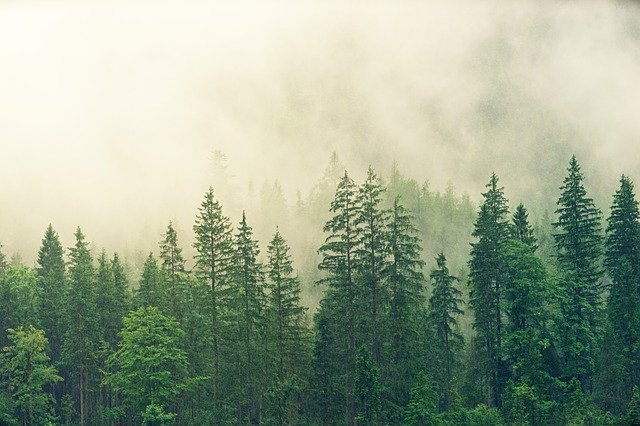August 12, 2021
By Lynda Kiernan-Stone, Global AgInvesting Media
Classified as an impact-first investment, Hancock Natural Resource Group (HNRG), a Manulife Investment Management company, has acquired 89,800 acres of timberland in the U.S. state of Maine, driven by the intention for the timberlands to be used to primarily sequester carbon.
“We are well-positioned to seek positive climate impact and to invest in assets to create carbon sequestration and other conservation opportunities derived from forests for the benefit of our clients,” said Tom Sarno, global head of timberland investments, Manulife Investment Management.
“We believe impact-first investments can meet the needs of those who are interested in offsetting carbon emissions and who may value other positive environmental or social impacts as well as generating financial returns.”
This investment, which was made on behalf of John Hancock Life Insurance Company (USA) and its parent Manulife, provides Manulife the opportunity to integrate natural climate solutions into its investment portfolio that work toward its climate action plan. From this position, Manulife stated that it reserves the option to sell the carbon credits as offsets or use the carbon removals for the purpose of meeting its net zero commitments.
“We are pleased to have the opportunity to acquire a significant impact-first asset which continues the execution of our climate action plan we shared in May when we committed to accelerate the development of investment strategies for those interested in natural climate solutions that capture even more carbon per dollar invested,” said Sarah Chapman, global chief sustainability officer, Manulife.
The acquired asset located in Somerset County, Maine, is a contiguous block of timberlands bordering the province of Quebec, Canada, with a diverse mix of naturally regenerated spruce-fir and northern hardwood tree species. It also encompasses Penobscot Lake, a 1,020 acre lake at the headwaters of the West Brand of the Penobscot River.
Given the moniker Blueback for its sought-after subspecies of Arctic char native to the local lakes there, a portion of the land will be handled as a working forest using sustainable stewardship practices.
“The amount of carbon a forest can store is directly proportional to the volume of timber in that forest,” commented Brian Kernohan, chief sustainability officer, private markets, Manulife Investment Management.
“Advanced light detection and ranging technology for timber volumes in our forests now allow us to measure forest carbon sequestration with improved accuracy – providing investors with even more quantifiable data for carbon storage. We are committed to the proactive management and stewardship of these timberlands to help meet both return and sustainability objectives.”
Additionally, this asset is subject to a working conservation easement, and given the bucolic lakes, rivers, and area scenery of the area, offers unique recreation opportunities as well.
With this deal, Blueback will become a part of Manulife’s global timberland and agriculture portfolios, which have removed an average of 2.24 million metric tons of CO2 from the atmosphere per year over the past five years.
Turning to Timber
This is the second major timberland acquisition conducted by HNRG within recent months. In March of this year, the group acquired 12,874 hectares (31,812 acres) of eucalyptus plantations in Mato Grosso do Sul, Brazil through its affiliate Sempre Verde Florestas e Agricultura Ltda, from AMATA, through AMATA subsidiary APEI Plantio de Floresta Exotica S.A. (APEI).
Concurrently, Manulife expanded its impact investing and natural climate solutions team through the creation of the new role of managing director, Impact Investing and Natural Climate Solutions at HNRG. Filled by Eric Cooperström, this new position will oversee the sustainability and responsible investing capacity for the group’s timberland and agriculture teams.
As a part of Manulife’s Private Markets platform, which includes private equity and credit, infrastructure, real estate, timber, and agriculture, HNRG manages 5.6 million acres of timberland across the U.S., Canada, New Zealand, Australia, Brazil, and Chile, and 400,000 acres of prime farmland across major agricultural regions in the U.S., Canada, Chile, and Australia.
Much of Brazil’s managed eucalyptus plantations provide raw materials to mills for paper production. However, the market is expanding, with eucalyptus log exports from Brazil growing by 122 percent from 2017-2018, with 89 percent of those exports going to China, according to data gathered by Forest2Market Consultants. And as deforestation becomes an ever-more critical global concern, demand for sustainable wood is growing as well – with Brazilian eucalyptus gaining particular attention as a substitute for exotic woods from the Amazon.
– Lynda Kiernan-Stone is editor with GAI Media, and is managing editor and daily contributor for Global AgInvesting’s AgInvesting Weekly News and Agtech Intel News, as well as HighQuest Group’s Oilseed & Grain News. She can be reached at lkiernan-stone@

Let GAI News inform your engagement in the agriculture sector.
GAI News provides crucial and timely news and insight to help you stay ahead of critical agricultural trends through free delivery of two weekly newsletters, Ag Investing Weekly and AgTech Intel.




